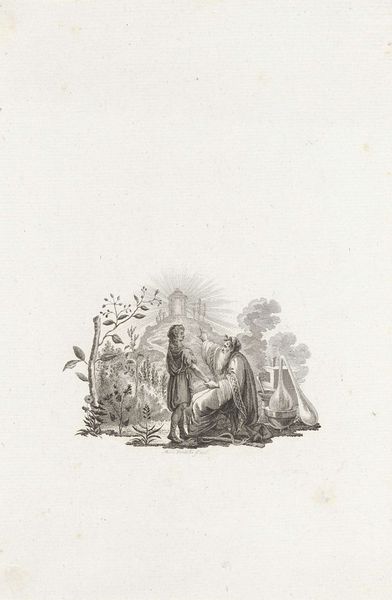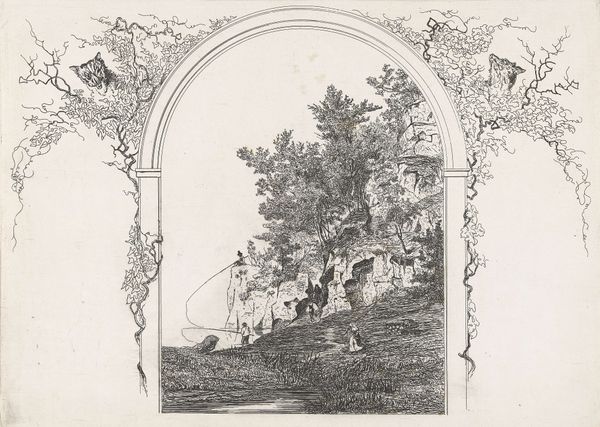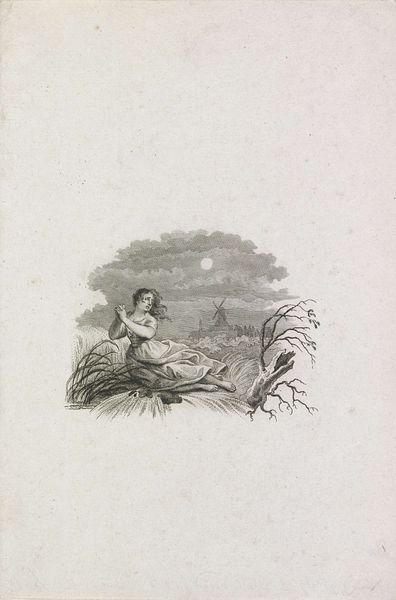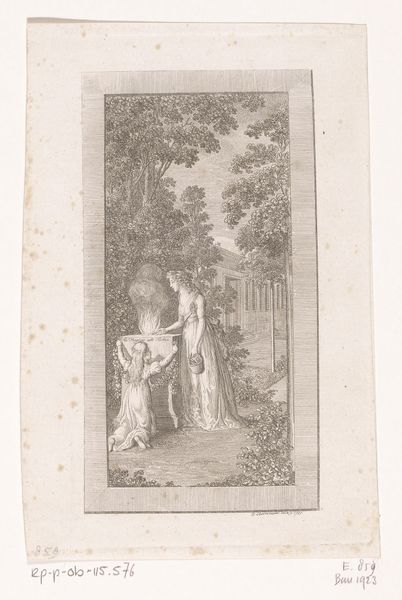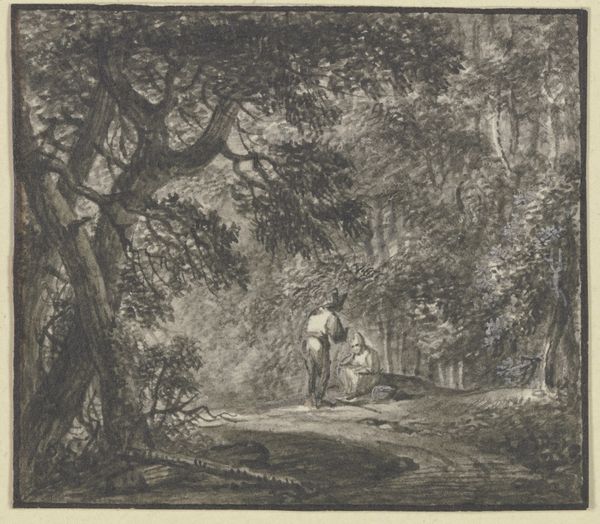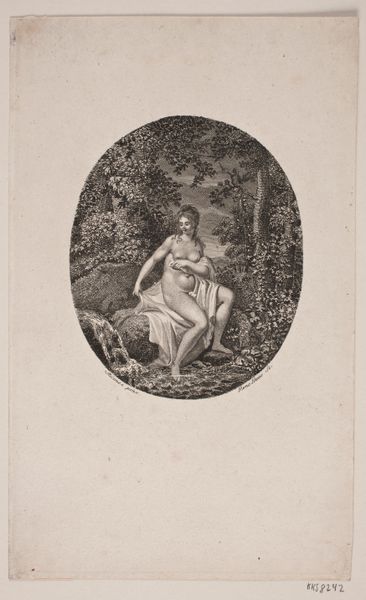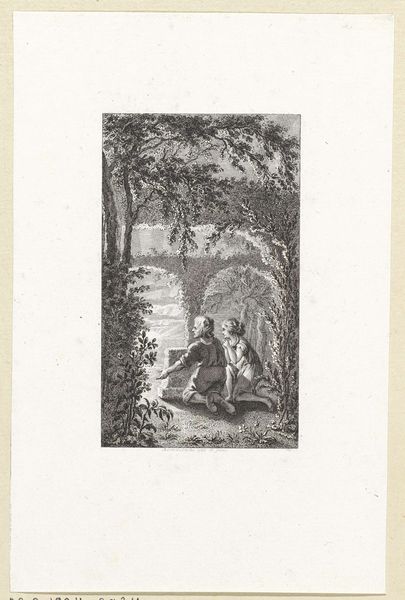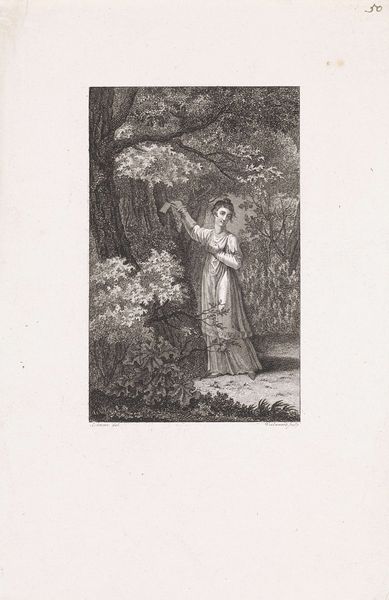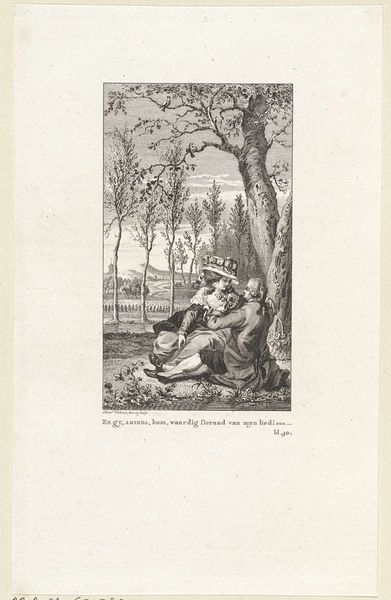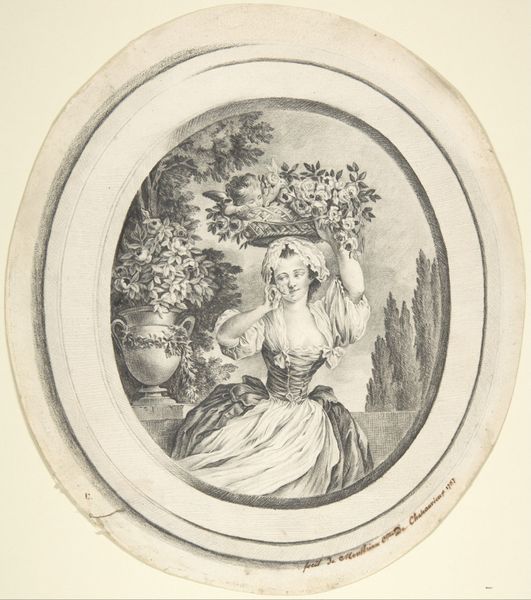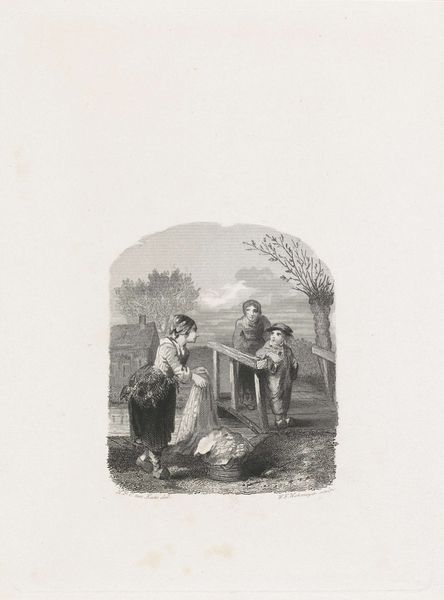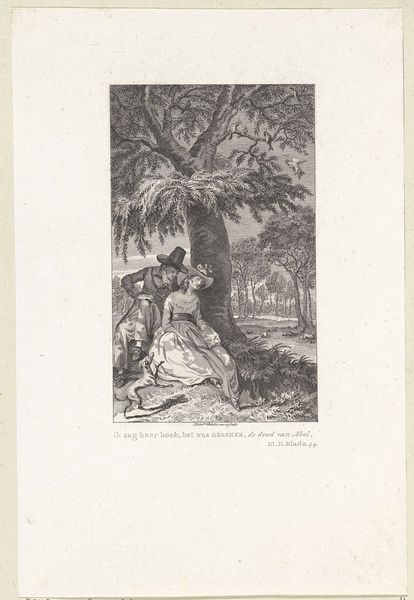
print, engraving
#
portrait
# print
#
landscape
#
figuration
#
romanticism
#
genre-painting
#
engraving
Dimensions: height 84 mm, width 109 mm
Copyright: Rijks Museum: Open Domain
Curator: This engraving, simply titled "Girl Watering Flowers on a Grave," dates to somewhere between 1797 and 1836 and is attributed to Philippus Velijn. Editor: The scene is strikingly mournful, wouldn’t you say? A lone girl tending to a gravesite, a seated figure watching at a distance… it speaks to quiet grief. Curator: The visual language is definitely drawing from the well of Romanticism, that sensibility obsessed with intense emotion, the power of nature, and the pathos of the human condition. Note the deliberate blurring of boundaries – is this a landscape, a portrait, a genre scene? Editor: Indeed. Water is such a crucial component – water gives life, but here, its gesture seems to soften the sharp, almost architectural aspects of death as stone. I am drawn to the oval shape framing the landscape like a vignette held together, memory pressed between the pages of a book. Curator: The lone seated man underscores feelings of melancholy, particularly because it suggests how the roles gender plays in dealing with grief. This imagery appears when, traditionally, it has been acceptable for women to publicly display grief through crying or wearing black. Men do not, and he is alone in his sadness. Editor: You know, in numerous cultures, water acts as both a physical and a spiritual conduit. Consider, for instance, the role of water in baptism rituals, where it purifies and regenerates, just as that gesture seems to bring life back in the flowers over death, over sorrow, over memory. Curator: Contextualizing this image also involves examining the prevailing socio-political conditions. This was an era marked by war and social upheaval. It also provides insight into changing notions of childhood and sentimentality. I wonder, does it invite empathy, or does it aestheticize loss? Editor: Both. The somber tableau becomes universal; water is the tears, the seated man becomes a stoic mourner, the child gives testament to our own shared vulnerability, perhaps why the flowers persist through an almost cyclical renewal through symbolic waters. I leave the image feeling not forlorn, but human. Curator: And sometimes that acknowledgement is powerful in itself. It makes room for those ongoing discussions that situate identity with loss.
Comments
No comments
Be the first to comment and join the conversation on the ultimate creative platform.
